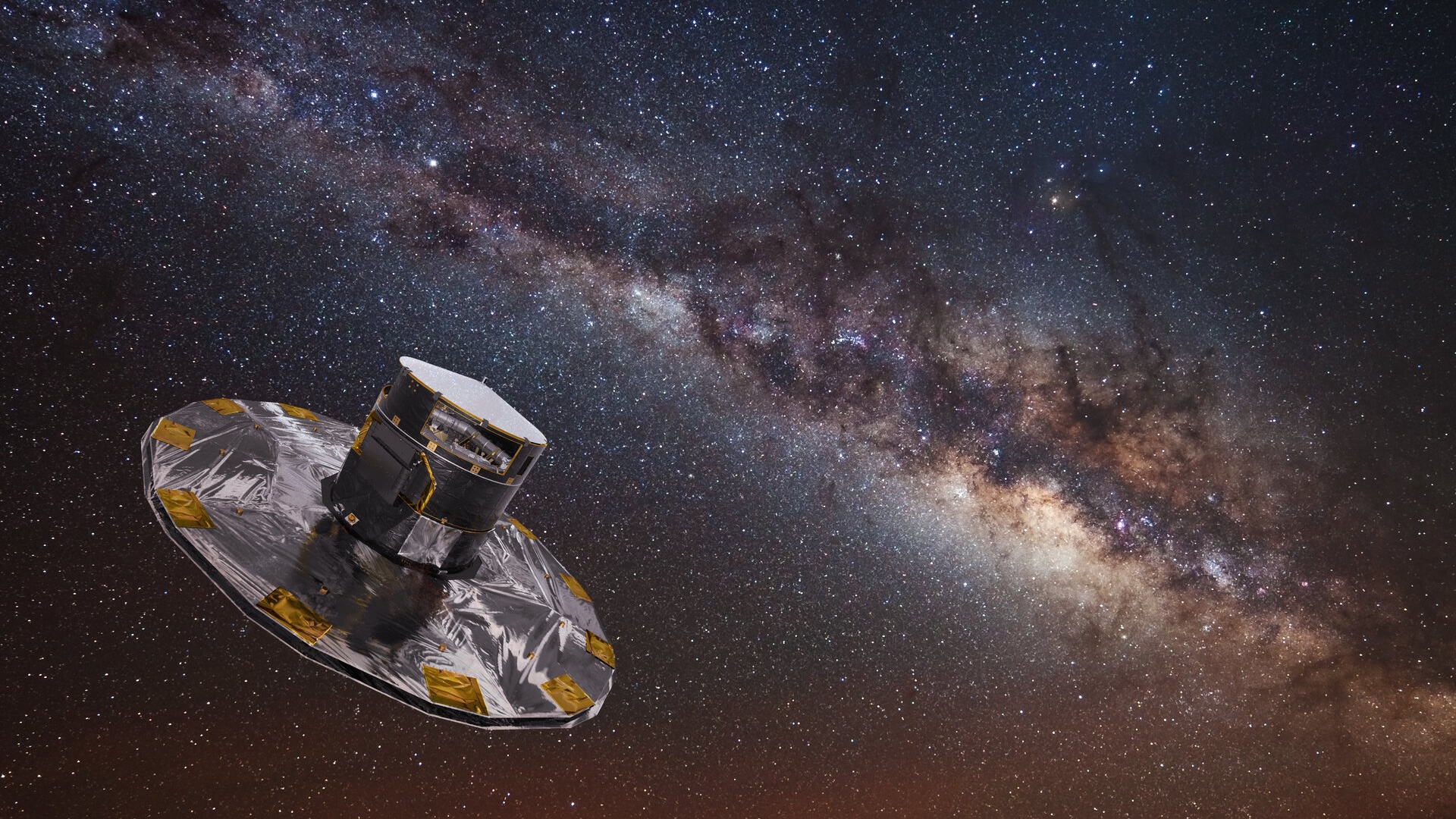Astronomers have used a space-time phenomenon first predicted by Albert Einstein to discover a rare planet hiding at the edge of our galaxy.
The exoplanet, dubbed AT2021uey b, is a Jupiter-size gas giant located roughly 3,200 light-years from Earth. Orbiting a small, cool M dwarf star once every 4,170 days, the planet’s location is remarkable — it is only the third planet in the entire history of space observation to be discovered so far away from our galaxy’s dense center.
Yet perhaps more exceptional than the planet’s location is the method used to discover it. The effect, known as microlensing, occurs when the light of a host star is magnified by the warping of space-time due to a planet’s gravity. The researchers published their findings May 7 in the journal Astronomy & Astrophysics.
“This kind of work requires a lot of expertise, patience, and, frankly, a bit of luck,” study co-author Marius Maskoliūnas, an astronomer at Vilnius University in Lithuania, said in a statement. “You have to wait for a long time for the source star and the lensing object to align and then check an enormous amount of data. Ninety percent of observed stars pulsate for various other reasons, and only a minority of cases show the microlensing effect.”
Nearly 6,000 alien worlds beyond our solar system have been discovered since the first exoplanet was detected in 1992. The two most common detection methods, called transmit photometry and radial velocity, detect planets through the dimming of host stars as they pass in front of them, or from the wobble that the planets’ gravitational tugs impart upon them.
A rarer method, known as microlensing, is derived from Einstein’s theory of general relativity and is produced by massive objects as they warp the fabric of the universe, called space-time. Gravity, Einstein discovered, isn’t produced by an unseen force but by space-time curving and distorting in the presence of matter and energy.
Related: James Webb telescope discovers its first planet — a Saturn-size ‘shepherd’ still glowing red hot from its formation
This curved space, in turn, determines how energy and matter move through it. Even though light travels in a straight line, light traveling through a curved region of space-time also travels in a curve. This means that when a planet passes in front of its host star, its gravity acts as a lens — magnifying the star’s light and causing its brightness to spike.
“What fascinates me about this method is that it can detect those invisible bodies,” Maskoliūnas said, essentially by measuring the bodies’ shadows. “Imagine a bird flying past you. You don’t see the bird itself and don’t know what color it is — only its shadow. But from it, you can, with some level of probability, determine whether it was a sparrow or a swan and at what distance from us. It’s an incredibly intriguing process.”
AT2021uey b’s cosmic shadow was first spotted in 2021 in data taken by the European Space Agency’s Gaia telescope, revealing its presence by a momentary spike in the brightness of its host star.
The astronomers then took detailed follow-up observations using Vilnius’s Molėtai Astronomical Observatory, from which they calculated its source as a planet 1.3 times the mass of Jupiter. Its host star burns at about half the temperature of our own, and the gas giant sits four times farther than Earth’s distance from the sun.
According to the researchers, the planet’s discovery so far from the Milky Way‘s central bulge, in a region that is comparatively sparse in heavier elements needed to form planets, offers a fresh hint of the unlikely places where planets can be found.
“When the first planet around a sun-like star was discovered, there was a great surprise that this Jupiter-type planet was so close to its star,” Edita Stonkutė, another Vilnius University astronomer and leader of the microlensing project that found the planet, said in the statement. “As data accumulated, we learned that many types of planetary systems are completely unlike ours — the solar system. We’ve had to rethink planetary formation models more than once.”
